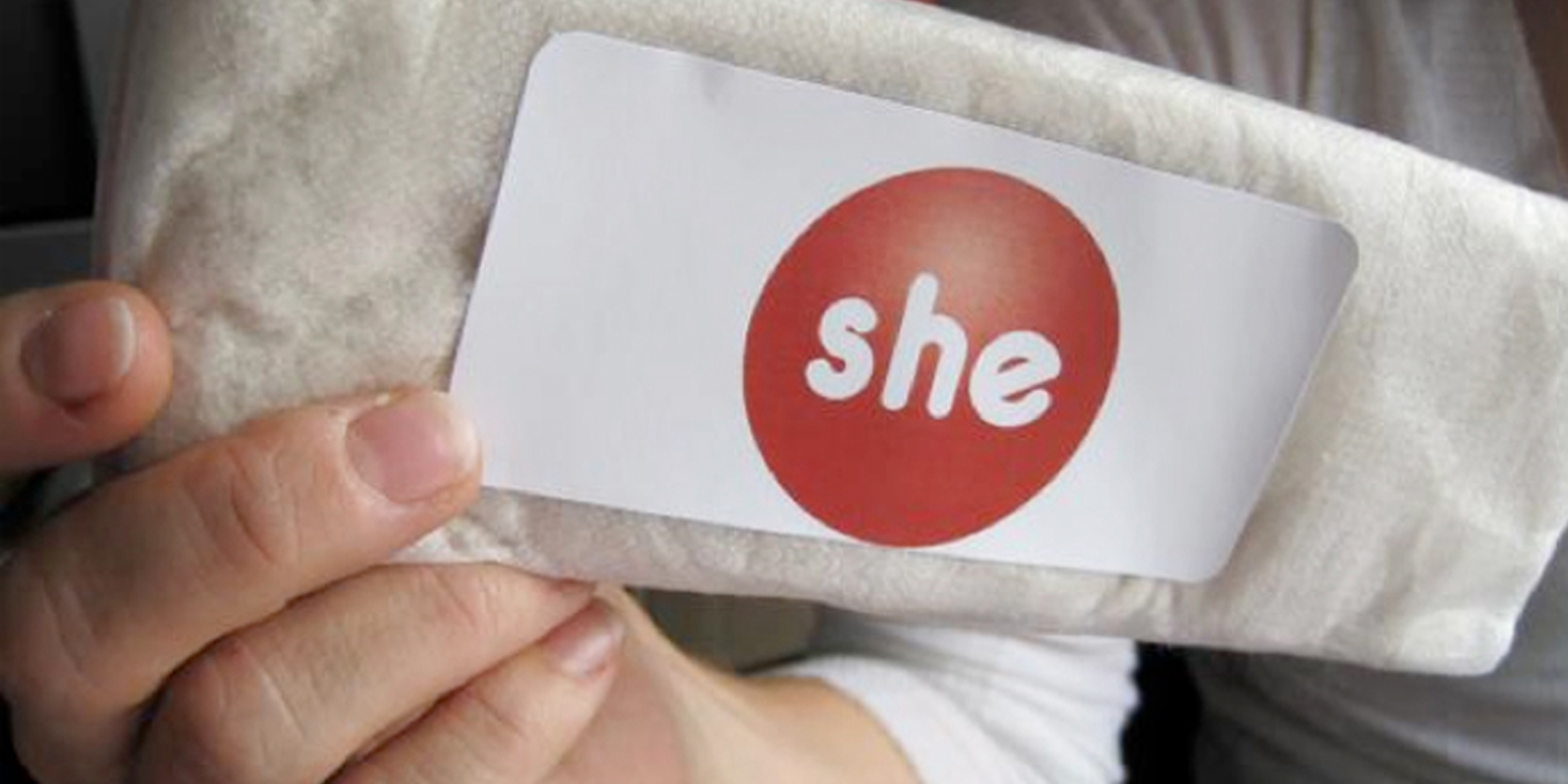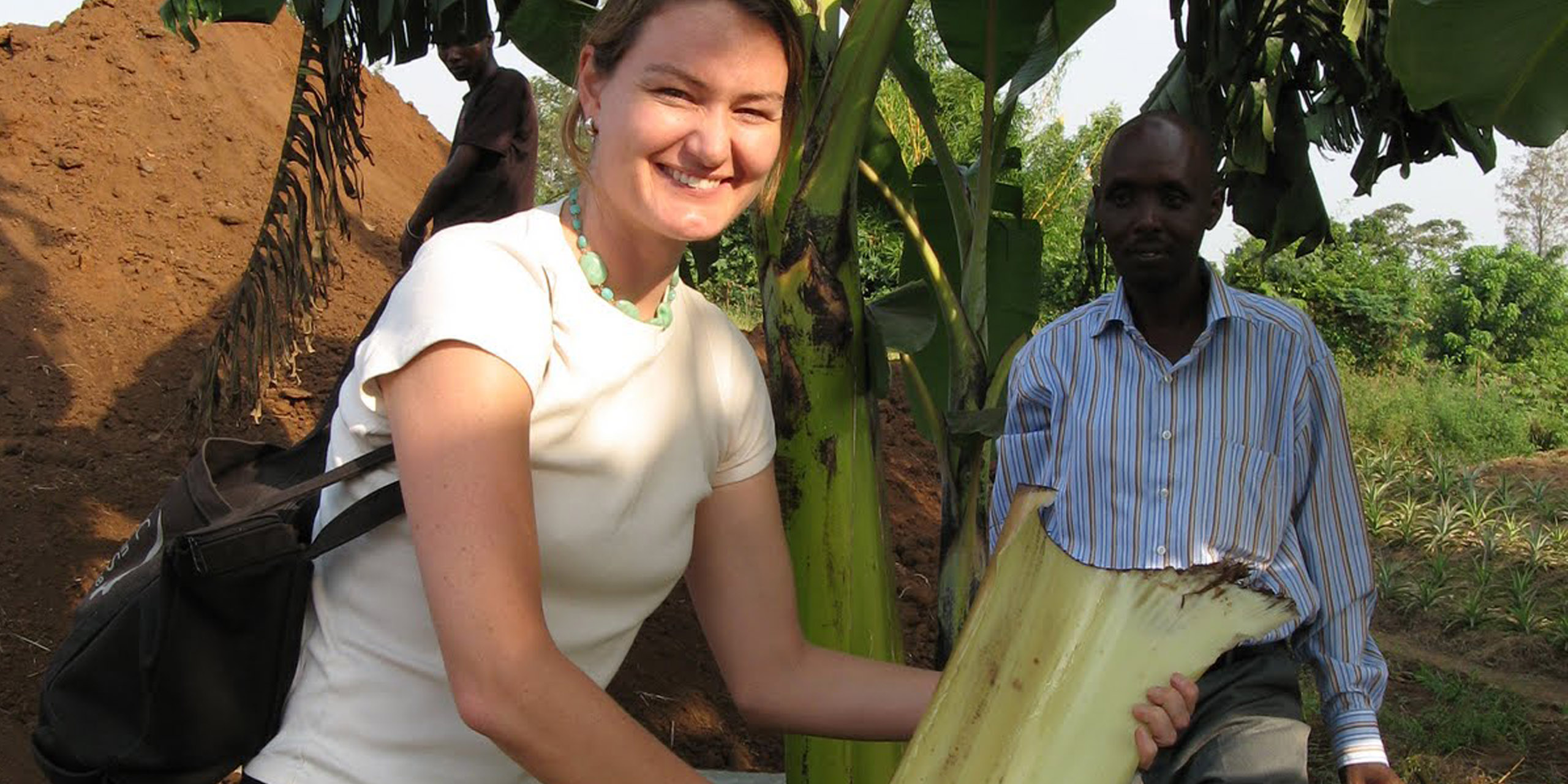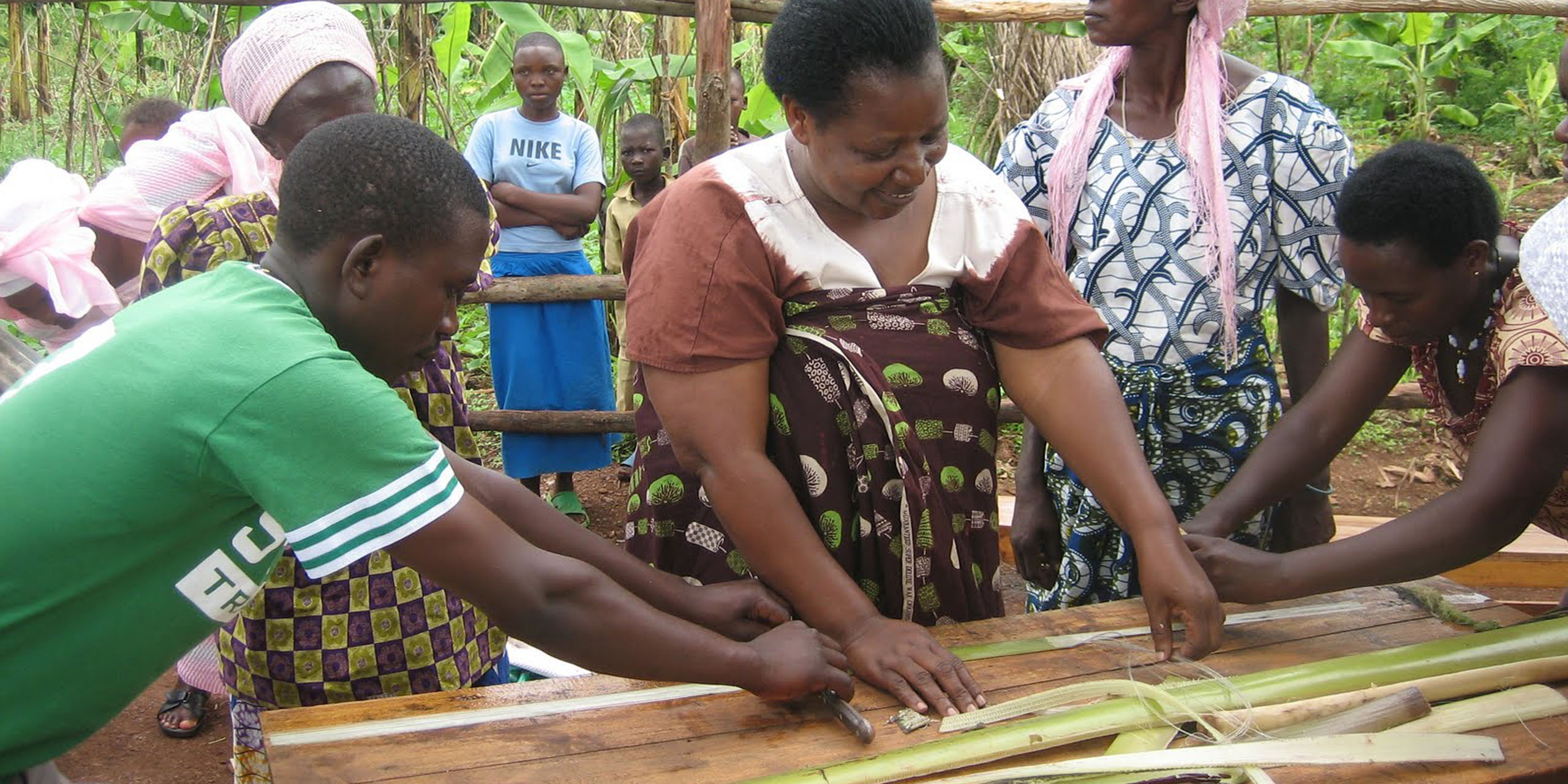SHE (Sustainable Health Enterprises): Awareness Campaign
- Global Health
- Public Policy
- Social Entrepreneurship
- Sustainable Development

Spring 2011
A studio hosted by the Illustration department, in collaboration with SHE (Sustainable Health Enterprises), to raise awareness and motivate action in the U.S. to address a critical lack of access to affordable, eco-friendly sanitary products for many women in developing countries such as Rwanda.
Background
Each year in developing countries like Rwanda, girls and women miss 50 days of work and school because they lack access to affordable and hygienic sanitary pads. The sanitary pads that are sold in Rwanda are imported, expensive and subject to a prohibitive 18 percent tax. As a result, many of these girls and women drop out of school and work, which has a traumatic impact on their communities. According to a United Nations study, females are the economic and social engines of their communities, with one dollar invested in a female offering a much higher return on investment than in a male. As a result, the alarming ‘drop-out’ rate of young women only reinforces the poverty and loss of opportunities for entire villages.
To address this problem, the social entrepreneur and women’s advocate Elizabeth Scharpf founded the nonprofit SHE (Sustainable Health Enterprises), which seeks to develop market-based approaches to help improve the quality of people’s lives in developing countries. In addition to increasing education among girls and women, recently SHE introduced locally manufactured, inexpensive and eco-friendly sanitary pads made of banana fiber for use in Rwanda and other developing countries. While the program is now off and running, the work of SHE is far from over. Making the sanitary pad crisis in Rwanda relevant to young people in the United States—so they will contact their congressmen, donate money to the organization, or simply spread the word—is the next step toward solving this global issue.
“Menstruation is one of those things that people don’t really want to have anything to do with. Most of the population is ‘left hanging after donation supplies run out.’”
—Elizabeth Scharpf, Founder, SHE

Design Brief:
Led by Designmatters, the Department of Illustration partnered with SHE in Spring 2011, and challenged a group of nine Art Center students to create an advertising campaign—using both traditional (print, video) and non-traditional media (like social networking, licensing, or installation as messaging)—to raise awareness among young women in the United States and the rest of the developed world of this critical lack of access to basic sanitary health supplies. By engaging young women in the movement, SHE hopes to create worldwide demand for a solution to this problem. Faculty members Ann Field, Elena Salij and Christine Nasser led the studio.
The project presented significant challenges for the students, most notably: How does one tackle a “taboo” issue that no one wants to talk about, even in the U.S.? But one that is negatively affecting millions of females each year?
Research and Project Development
Throughout the term, students gathered information and research on the impact of unaffordable sanitary pads in Rwanda. They participated in Skype calls with Scharpf (who was in Rwanda), and she explained that most Rwandan girls are not educated about their bodies and menstruation, and that only 10 percent of the menstruating population uses sanitary napkins, with the rest using un-hygienic rags, bark and mud. The main barriers include cost and lack of education.
Students also heard from guest speakers like alumna Radhika Bhalla (GRAD ID ’10), who began working with SHE the previous fall and shared her experiences with the group from a recent trip to Rwanda. She discussed the sanitary pad market, retail environment and manufacturing process. Another guest speaker, alumna Wendy MacNaughton (FINE ‘99), spoke about her experience in that country when she was commissioned to create and illustrate the first national democratic campaign in Rwanda. MacNaughton stressed the importance of creating campaigns that are culturally relevant, ethnically sensitive and easily understood—advice that applied to the students’ projects. “You have to ditch the ego,” she said. “The worst thing is to stay in a bubble and just design without paying attention to the end users.”
In this case, the end users were young Americans, and the students researched the population’s perceptions regarding menstruation here in the U.S. and how they could make the topic more accessible while injecting a sense of urgency into the need to help the girls and women of Rwanda.
“We’re often told it’s indecent to talk about sanitary pads. Well, it’s indecent not to talk about sanitary pads. Getting pads to girls in Africa is one way that can contribute to them pulling out of poverty.”
—Elena Salij, Co-Lead Faculty, SHE Project

Outcomes
The final presentations featured an extraordinary range of work—-from consumer goods that could be purchased with a portion of the proceeds benefitting SHE to more overt campaigns with calls to action to donate money or take political action.
For example, second term Advertising student Amy Cook created posters that capitalize on the built-in camaraderie found in female restrooms, where she envisions the posters would be hung. “Excuse me, do you need an extra pad?” is the recurring question found on these materials, which feature cut out silhouettes of females joining hands in unity, standing strong. As Cook explained, “I’ve often witnessed strangers asking one another for a quarter or a tampon while in the restroom. We’re willing to help out strangers in the bathroom, so why not extend this solidarity even further? A girl is a girl no matter where you’re from.” Each poster includes information on how to make a text donation to SHE. Cook also created a print ad containing the statement, “It’s not a luxury, it’s a human right.”
This idea that access to sanitary pads is a fundamental human right resonated with Kathleen Lorden as well, a third term Graduate Broadcast Cinema student. Her project possessed a more militant tone, focusing on instigating a campaign to mail sanitary pads to President Barack Obama. Lorden’s defining image is a sanitary pad with the words “This is a Human Right” emblazoned across it, and it appears in all of her project materials—on sanitary pads, in letters to President Obama (who would receive a pad with each letter), t-shirts, posters and more. Lorden’s overall concept was born in social networking and depends on the multiplier effect of friends sharing with friends to spread the message. “I want to get political leaders to be aware and talk about the issue, and to pressure Rwanda’s leaders to lift the unfair tax,” she said. “There’s an unapologetic character to my campaign.”
Julie Wojnarowski, Alison Krumweide and Heather Landis attacked the challenge through humor. Their collaboration resulted in an entertaining short video animation starring down-to-earth puppets Britney and Heather, who in their Valley Girl accents dissect menstruation and the situation in Rwanda, concluding, “life shouldn’t stop every 28 days.” “We wanted to use the puppets in a compelling, heartfelt, yet humorous way to bring awareness to a serious subject. Being part of the target audience ourselves, I think we were successful,” said Wojnarowski.
Several students pursued a more subtle approach, including Cynthia Halley, currently a fifth term student, who created pillows with butterflies (“a symbol of inhibition” according to Halley) that could be sold in boutiques, with a portion of the proceeds benefiting SHE.
Jon Lau and John Kim, the two male members of the studio, explored traditionally feminine motifs and became fixated on “braids” for their youthful and “girly” qualities. Believing that braids were a perfect way to address the younger Western female demographic, Lau created two illustrations of the same girl: one wearing an expression of misery, the other with a stronger, more confident expression. “I was hoping the effect would be to compel one to take action or do additional research of their own,” said Lau. Kim, meanwhile, created an emblem for SHE that could find a home on tote bags and articles of clothing, signaling membership in the SHE tribe.
Next Steps:
Faculty members Ann Field, Christine Nasser and Elena Salij were all pleased with the students’ final work, agreeing that the projects represented authentic and discrete proposals for how visual materials can help SHE. A second stage of collaboration through Designmatters will take the most promising proposals to a new phase of development.
“A girl is a girl no matter where you are from.”
—Amy Cook, Advertising Student

